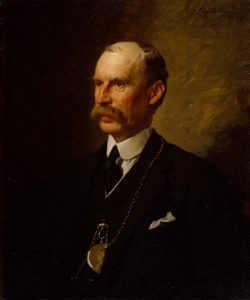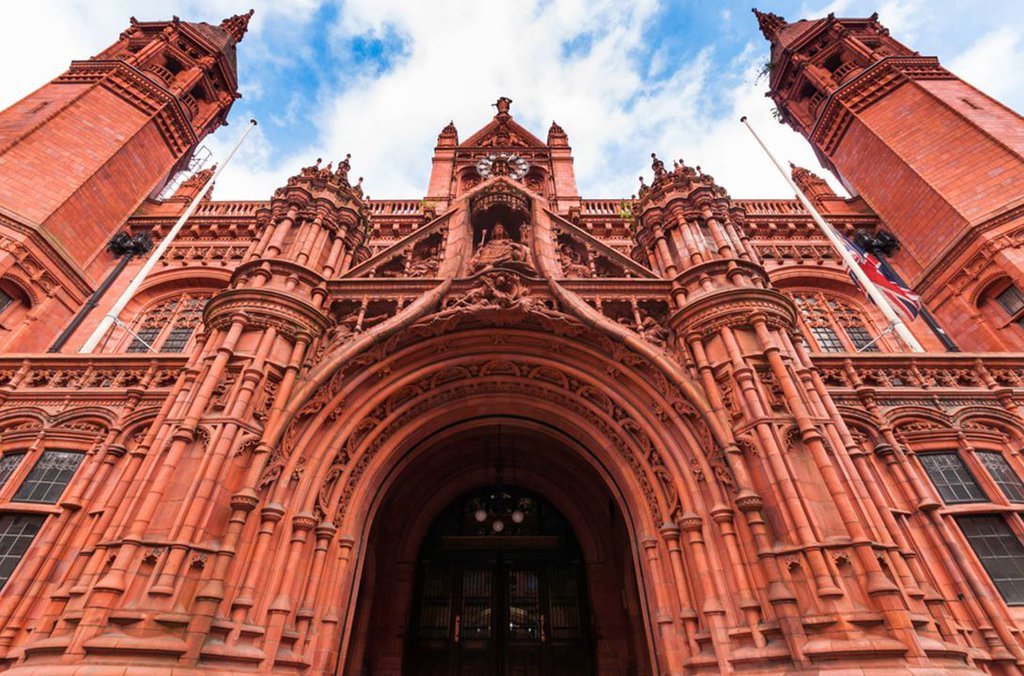Architects that Shaped Birmingham – Issue 3: Sir Aston Webb

Credit line: (c) (c) Royal Academy of Arts / Photographer credit: Prudence Cuming Associates Limited
Sir Aston Webb was widely considered to be one of the most talented, successful and significant architects of the Victorian era. Born in Clapham on 22 May 1849, he lost both parents at an early age but thrived nevertheless entering the practice of Banks and Barry as a trainee in 1866 and winning the Pugin studentship* of the Royal Institute of British Architects in 1873.
* an annual travelling studentship within Great Britain
After serving his articles, Webb set up his own practice, and from the early 1880’s worked closely with Edward Ingress Bell. It was said that the two complemented each other well, Bell being a skillful planner and a rapid draughtsman with a retiring disposition in contrast to Webb’s taste for public life.
The pair would go on to design some of the best known buildings in London such as the Cromwell Road frontage to the V&A museum; Admiralty Arch and the re-designed principal façade of Buckingham Palace but their breakthrough and first major commission came in 1886 when they submitted the winning design for the Victoria Law Courts in Birmingham.
They were subsequently appointed by the University of Birmingham to develop the masterplan and original buildings at Edgbaston.
VICTORIA LAW COURTS

Victoria Law Courts main entrance off Corporation Street
Around 1880 Birmingham was granted its own Assizes, and a site was reserved in Corporation Street for the Law Courts that were now needed.
The richly decorative red brick building is faced with Ruabon terracotta with green stone tiling used for the roofs. Either side of the entrance porch with its rounded arch are small but elaborately moulded projecting towers or tourelles, and at either end of the central bays are taller towers. Above the main entrance is a gabled clock-tower crowned by the figure of Justice.
The design has been described as stylistically eclectic, drawing from both Gothic and Classical (predominantly French Renaissance) and the profusion of ornamentation was only possible because it was cast rather than carved.
The grandest part of the interior is the Great Hall that stands behind the central entrance with a hammerbeam roof, panel type tracery windows, arched passages, balconies like minstrels’ galleries, and five partricularly splendid chandeliers.
The building was opened by the Prince and Princess of Wales in July 1891.
UNIVERSITY OF BIRMINGHAM CHANCELLOR’S COURT

Image courtesy of the Victorian web
University of Birmingham Chancellor’s Court buildings
Around the time they were completing the Law Courts and by then considered the leading partnership of the day Webb and Bell were chosen by the University of Birmingham to create what is suggested to be the first formally planned British university.
The overall scheme, in a Byzantine style, consisted of a curved building with five radial blocks. The central building of Chancellor’s Court containing the impressive Great Hall is named after Aston Webb. Built in Accrington red brick relieved with stone dressings, decorative elements include a row of nine statues over the main doorways and a ceramic frieze.
The eastern most block of the masterplan would not be built for another hundred years but was finally completed in the style of the original and to great acclaim with an award winning design by Glenn Howells Architects for the Bramall Music Hall which opened in 2012.
A separate tall tower (affectionately known as ‘Old Joe’) commemorates the University’s first Chancellor Joseph Chamberlain. It is modelled on the Torre del Mangia at Sienna which Chamberlain and his wife had admired on a trip to Italy.
Sir Aston Webb held several notable positions including President of the RIBA (1902-4) and President of the Royal Academy (1919-1924). He died in Kensington, London on 21 August 1930.
